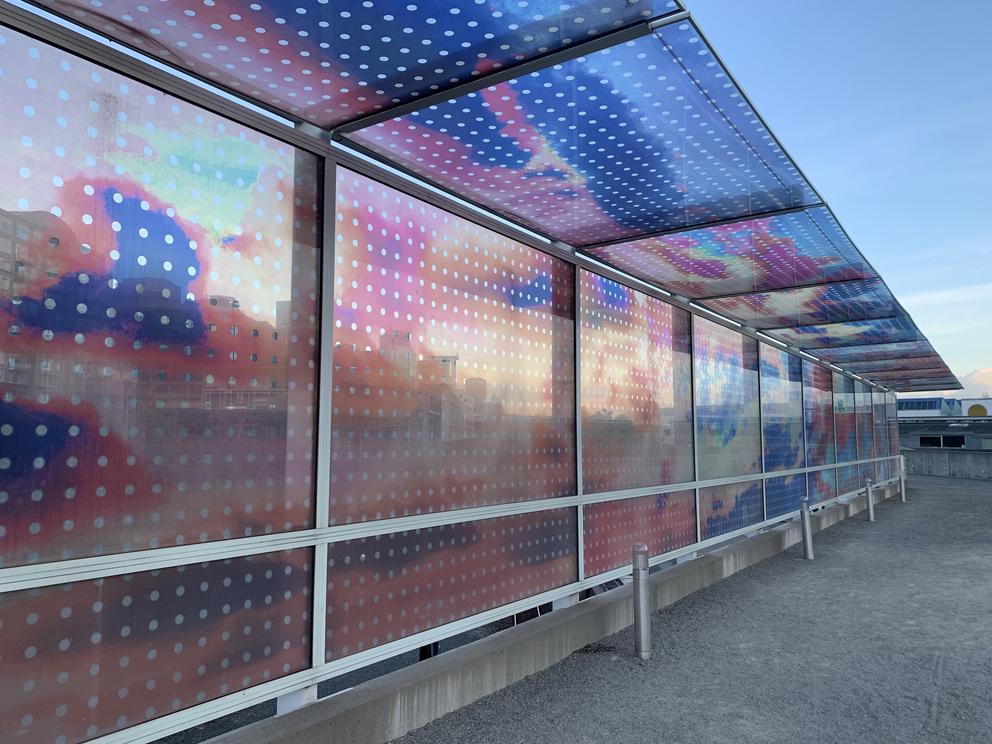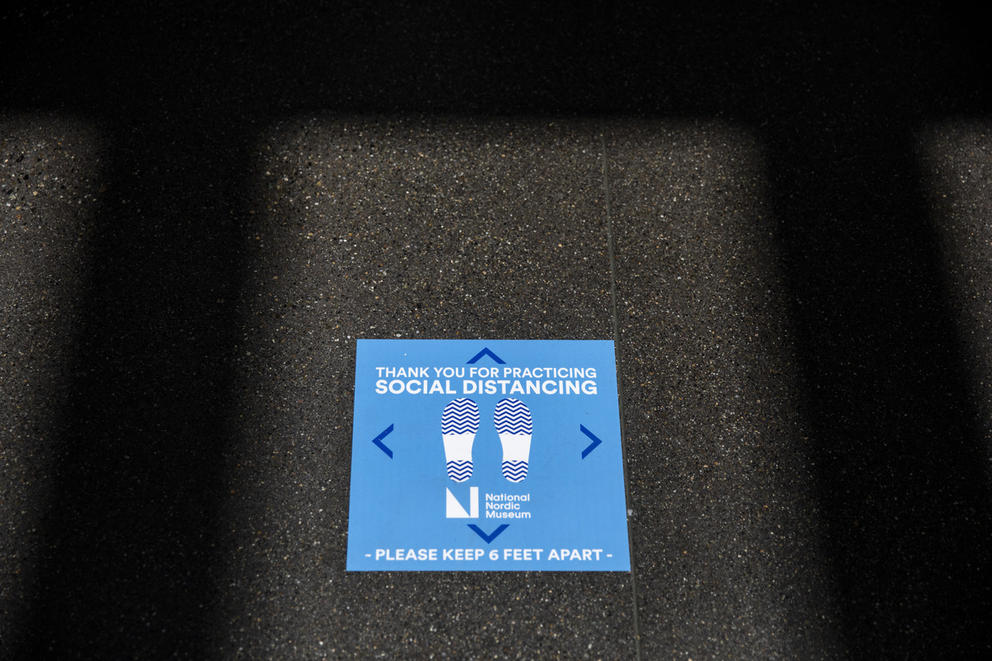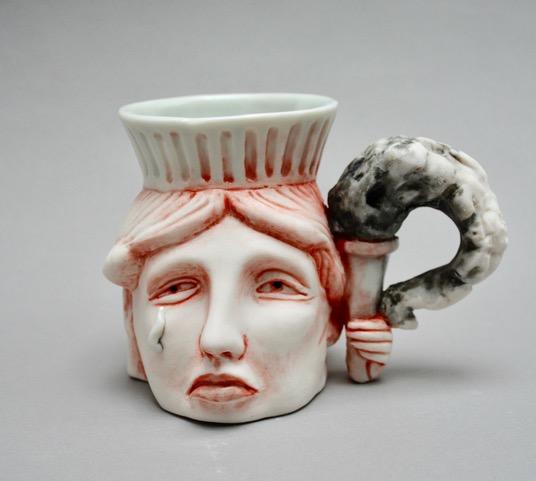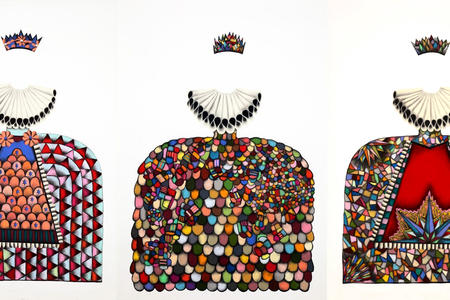This time of year always brings a bit of melancholy, with less daylight and the dwindling of outdoor explorations. There’s usually comfort in the sheer regularity, the “to every season turn, turn, turn” of it. But this year we’re returning to an uncanny valley — where the rhythms and rituals are familiar yet skewed. (While “uncanny valley” is a term coined to describe the unsettling feeling we get when robots look too human, it seems like a solid metaphor for our general state of being right now.) Kids are going back to school … largely online. The sartorial shift to fall fashion is on view … from the waist up. (P.S.: masks are the only must-have accessory this year.)
Similarly, performing arts organizations are kicking off their new programming seasons this month … but using a different lingo that promotes a “virtual fall season,” “subscription-based streaming service” or a “fully digital dance card.” There’s a whole lotta pivoting goin’ on. In recent weeks, the Seattle Symphony Orchestra (which proved itself a vanguard by streaming free, previously recorded concerts as soon as coronavirus precautions set in), Seattle Opera and Pacific Northwest Ballet have announced new ways for their large and loyal audiences to experience works online.
These innovative subscription models, in which users pay for online access to both newly created and greatest hits performances, are an attempt to ameliorate some of the huge revenue loss caused by COVID-19 closures. Nothing can replace the feeling of experiencing live performance in a theater. But in opening up these experimental avenues, the organizations may find reasons — such as an increase in audience members from outside the region — to continue offering some online options, even after we can return to sitting in seats shoulder to shoulder.
Elsewhere in the uncanny valley, Washington state museums are starting to reopen. Originally slated to open in Phase 3 of Gov. Jay Inslee’s “Safe Start” plan, local museums organized a plea to join their Phase 2 brethren (such as art galleries) that are already doing business with safety restrictions. It worked. As of Aug. 20, arts, cultural, science, kids and all other museums in Phase 2 counties are permitted to open at 25% capacity.
As Crosscut’s Margo Vansynghel reports, it’s not a simple decision. For some cultural organizations, the severely limited ticket sales wouldn’t generate enough income to offset the costs of being open (such as staffing and HVAC). Others worry about putting their communities at risk, even if the guidelines are followed to the letter. And perhaps the biggest question of all: If you open, will they come?
In an interesting bit of research Margo uncovered, museumgoers were found to harbor a mental hierarchy of risk when it comes to where and whether they would go back. It’s much like the question of whether you’re ready to return to a restaurant. (I’ve gone out to eat only once during the pandemic, in Montana, on a blustery roof deck where the four of us were the sole patrons — and even that felt a little scary.) Does the museum have big open spaces? Can I see what I want to see in a relatively short amount of time? What if people don’t obey the 6-foot rule?
There is a lot to worry about. But there’s also that seasonal force … pulling at my legs as if I’m standing in the ocean. For me, walking through a museum feels like a natural return to fall. The array of big museum reopenings begins this weekend (and continues through October), with the National Nordic Museum and The Museum of Flight opening their doors to masked patrons coming back for cultural immersion. Weigh your own hierarchies and proceed with caution.
Some autumn occasions are proceeding as normal, such as the Washington State Book Award nominations. The Washington Center for the Book recently announced the 2020 finalists, and as usual the roster serves as a handy syllabus of Pacific Northwest authors. This year the running includes three distinct visions of Seattle, from a zombie apocalypse narrated by a cranky crow (Hollow Kingdom, by Kira Jane Buxton) to a meditative movement poem (Turn Around Time: A Walking Poem for the Pacific Northwest, by David Guterson) to a cartoon appreciation for the city’s overlooked small wonders (Seattle Walk Report: An Illustrated Walking Tour Through 23 Seattle Neighborhoods by Susanna Ryan) — all of which we’ve written about at Crosscut, see links.
And there’s another fall event rolling around, some might say looming: the presidential election. You might feel compelled to hide during the days leading up to Nov. 3, but the new group show at Traver Gallery offers some artful advice: Do Not Avert Your Eyes (Sept. 3-27, open with social distancing), which features work exploring current sociopolitical issues. Exhibiting artists include Einar and Jamex De La Torre, Mexican-born makers of provocative pop glass art; Scott Fife, whose gigantic cardboard heads never fail to amaze; Lynn Whitford, who hammers smooth shapes from sheet metal (including a copper urn titled, “Beating COVID-19 to Death”) and the inimitable Patti Warashina.
Honored with a 2020 Visionary Artist Award from the Smithsonian earlier this year, Warashina is a ceramics superstar. Over her 50-year career, her work has included multitudes of bendy women with impish auras. Their sense of lusty abandon and limbs going every which way sometimes recalls Bosch’s Garden of Earthly Delights. Her biting wit is evident in this show, too, as she conveys the political climate with clay works that call attention to democracy in danger, a certain president’s ties to Putin and lady liberty having a breakdown.
One last note about seasonal milestones: For me, the arrival of fall is signaled by Bumbershoot. I attended the music and arts festival for the past 25 Labor Day weekends, whether as an eager fan, an arts writer or a presenter. It wasn’t always great, especially in recent years, but it was an old-Seattle staple and as much a part of the seasonal shift as digging my raincoat out of the closet. It’s not happening this year (the fest was struggling even before COVID arrived) and that feels weird. But here in the uncanny valley we are becoming star students of weird. With luck all this new knowledge makes us better prepared for the next lesson.
Get the latest in local arts and culture
This weekly newsletter brings arts news and cultural events straight to your inbox.








